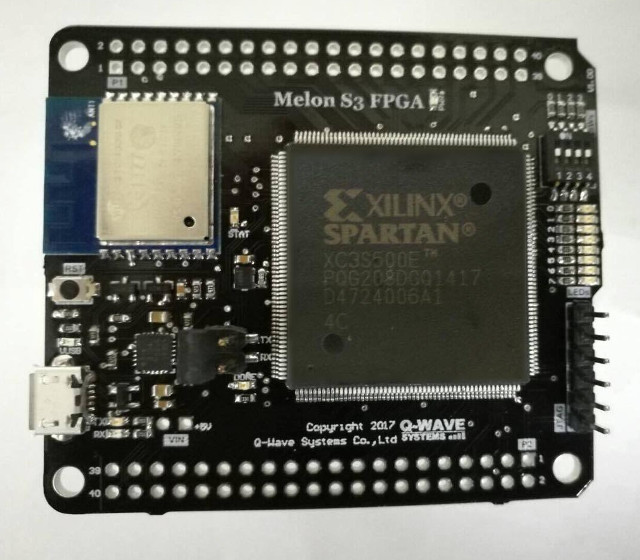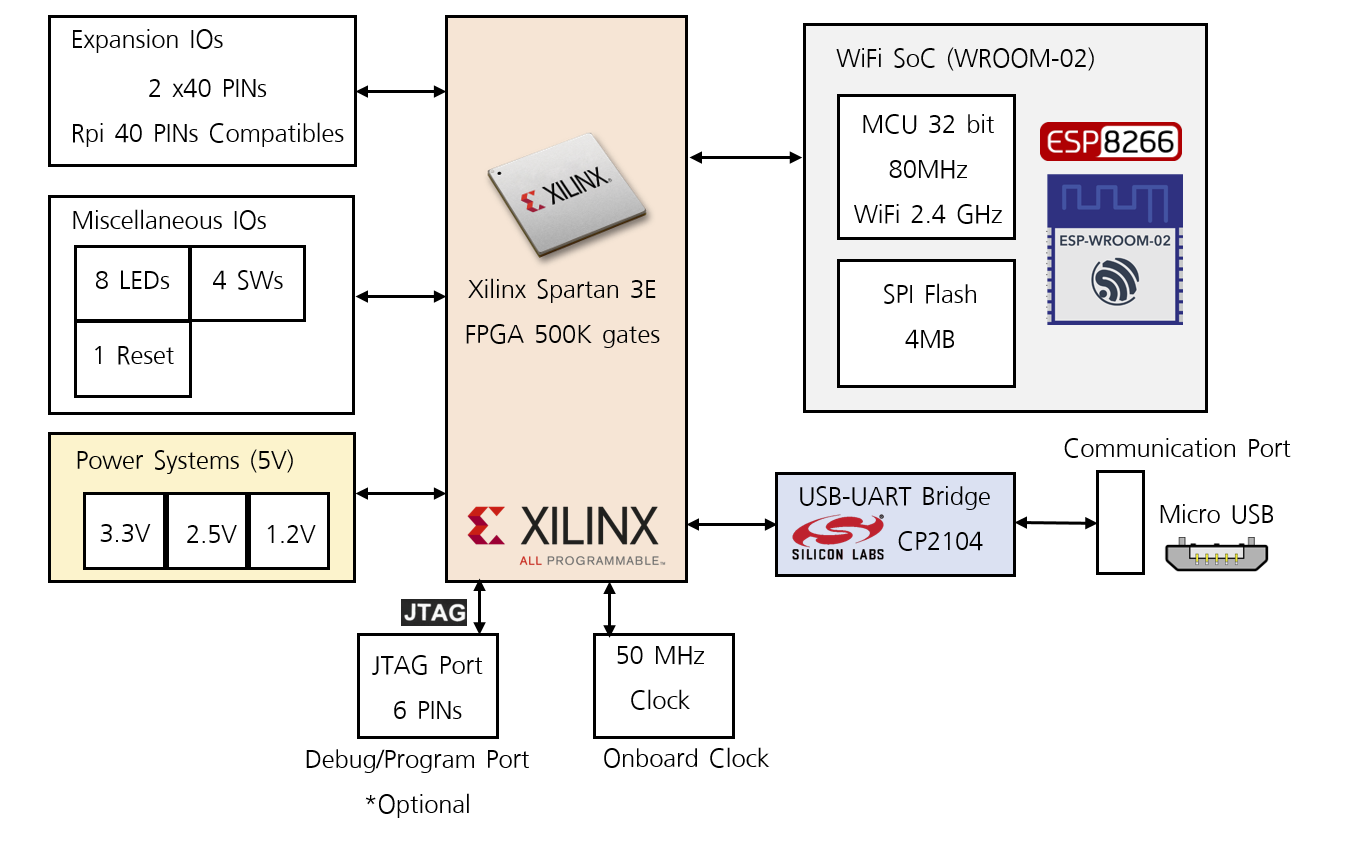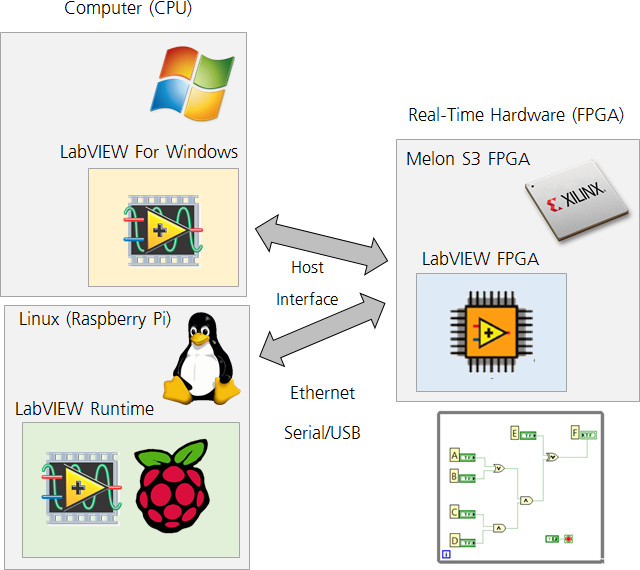Q-Wave Systems, an embedded systems company based in Thailand, has designed Melon S3 FPGA board powered by a Xilinx Spartan 3E FPGA with WiFi connectivity added through a ESP8266 module programmable with the Arduino IDE , and featuring two Raspberry Pi compatible headers. The FPGA bitstream can be updated over WiFi, and does not require a JTAG debugger.

Melon S3 FPGA specifications:
- FPGA – Xilinx Spartan XC3S500E FPGA with 500K gates, 73Kb Distributed RAM, 4 Digital Clock Manager (DCM), 20 Multipliers (18×18), 360 Kb Block RAM
- WiFi module – WROOM-2 with Espressif ESP8266 32-bit MCU @ 80 MHz supporting 802.11 b/g/n WiFi.
- Storage – 4MB SPI flash in total with 1MB for ESP8266, 3 MB for FPGA
- Expansion – 2x 40-pin Raspberry Pi compatible headers; 3.3V tolerant
- Debugging – Onboard USB-UART Silicon Labs CP2104 for configuration, debugging and power; 6-pin JTAG port for debugging/programming
- Misc – 8x Users LEDs, 4x DIP switch user button, 1x reset button, on-board 50 MHz FPGA clock
- Power Supply – 5V via micro USB port
- Dimensions – 65 mm x 56.5 mm x 10 mm
- Weight – 20g

The board can be used in standalone, but it’s also compliant with Raspberry Pi HAT form factor, and can be inserted on top of Raspberry Pi boards with 40-pin headers, which in theory would allow you to run the Arduino IDE directly on Raspberry Pi to program Melon S3 FPGA board.
You can also program the FPGA using development tools such as Xilinx ISE Webpack (free), MATLAB HDL Coder/HDL Verifier and National Instruments LabVIEW FPGA Toolkit, and upload the resulting bitstream using the board’s web interface.

The board is available via a sort of self-organized crowdfunding campaign, with at least 50 backers required by May 31. At the latest update, they had 74 backers, so the project will go ahead with mass production and shipping taking place in June. They’ll eventually post all documentation, hardware design files, and source code in Melon_S3_FPGA github repository (currently empty), but in the meantime you can get some information, including schematics in PDF, and a more details overview of the board and the way to program it in the product page in English, where you’ll also be able to order it for $79.99 plus shipping. If you are based in Thailand, you can get it for 2,800 Baht instead.
All backers will also be invited to a free one day seminar to learn out to use the board, as long as you are ready to go to Bangkok in Thailand.

Jean-Luc started CNX Software in 2010 as a part-time endeavor, before quitting his job as a software engineering manager, and starting to write daily news, and reviews full time later in 2011.
Support CNX Software! Donate via cryptocurrencies, become a Patron on Patreon, or purchase goods on Amazon or Aliexpress




